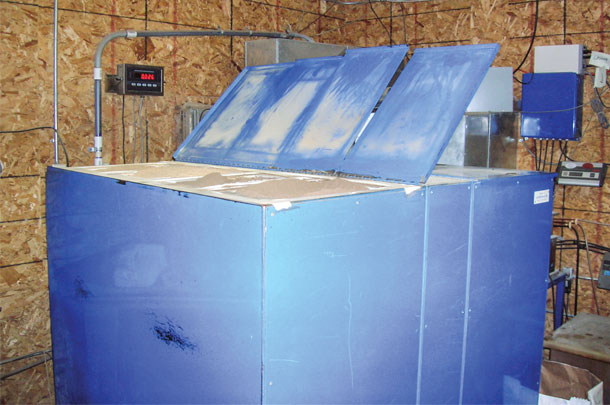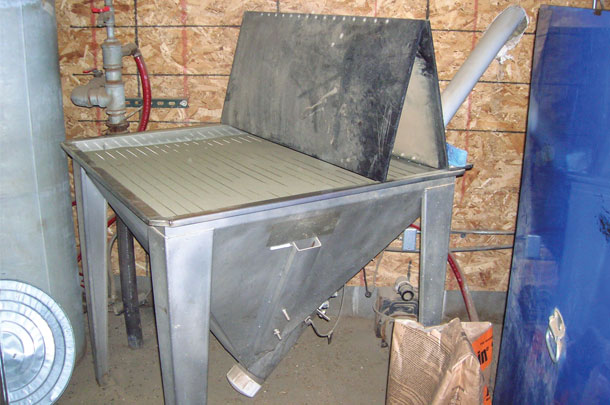In December 2016, the Veterinary Feed Directive (VFD), administered by the FDA, will require veterinarian authorization when using feed-based antibiotics for treatment, control and prevention.
The VFD’s primary purpose is to require additional veterinarian oversight on antibiotics administered through feed and water to reduce resistance to medically important antibiotics.
According to Dr. M. Gatz Riddell, American Association of Bovine Practitioners executive vice president, treatments of antibiotics in cattle feed play a small role on bacteria in the intestines of cattle and, because they are considered foodborne pathogens, they may cause health issues in people.
“There is not adequate science to define that role, so in the absence of this science, a lot of people default to the precautionary principle – if there is any chance at all, we need to stop doing something,” Riddell says. “The FDA saw a constructive way of addressing this issue to provide veterinary oversight for a large group of products that have been over-the-counter.
“This is the FDA’s regulatory way of addressing the issue of antimicrobial resistance,” Riddell says.
In the past, different legislation has been debated – but never fully pursued – that would’ve taken away a majority of the medically important antibiotics that are now under the VFD. Recently, the FDA has gradually removed the feed and water additives used for growth promotion.
Because feedlots have such a short time line to handle cattle when they arrive, feed-based antibiotics enable them to treat numerous sick animals at once. Feed efficiency and disease prevention are some of the primary purposes of feed additives.
VFD training and requirements
Under the terms of the upcoming VFD rules, a producer will need to regularly consult with a veterinarian on all feed antibiotics.
“The owner requests help, and the veterinarian then makes the decision to use the drug and does all the paperwork,” says Dr. Dee Griffin, a professor at the University of Nebraska with 40 years of veterinarian experience. “The veterinarian does all the communicating with the FDA and all the parties involved.”
For feed-based antibiotics to be implemented in feedlots, the owner and veterinarian must have a veterinarian-client-patient relationship (VCPR). The veterinarian will not be able to take any action until knowledge of the operation and contact with the animals has been established.

“A really high percentage of feedyards have really good VCPRs and consulting veterinarians,” Riddell says. “So this will change the relationship in that the veterinarian will be in the loop deciding antibiotics that will be in the feed.”
The feedlot veterinarian is also responsible for training feedlot employees to spot sick cattle. To make things simple, Griffin always trains the same four people in any feedlot: the feedlot manager (yard manager), cattle foreman (manager of the cowboys), hospital foreman (who doctors the animals) and feeding foreman (oversees feeding and bunk management).
Utilizing VFD feed-based antibiotics
When any antibiotics are requested and prescribed, forms are filled out, and three copies are given to the feedlot owner, veterinarian and the feed mill. The FDA requires these documents be kept on record for two years.
Griffin points out that these prescriptions can be written in anticipation of arriving cattle. If a feedlot expects that they will buy 10,000 head of cattle in the next 30 days, the veterinarian can write a prescription so the medication is accessible and can be used if the animals need it after they arrive.
“This is just going to provide better communication and veterinarian oversight of antibiotics to make sure they are used at the right time, for the right reason, at the right dose,” Riddell says.

The commonly used feed-based antibiotic Tylosin, a feed additive fed to prevent liver abscesses in cattle, will be regulated under the VFD. Ionophores such as Rumensin, an additive primarily used to improve feed efficiency and prevent coccidiosis, will not be regulated under the VFD unless they are mixed and fed with one that is – it then requires VFD authorization.
Water-administered antibiotics are not included under the VFD, but they will still require a prescription and will not be available over-the-counter.
A producer’s perspective
According to Mick Sharp, manager of Kansas-based Ashland Feeders, his cowboys, the veterinarians and himself have always approached herd health as a team.
“The VFD isn’t going to be a very big step,” Sharp says. “It’ll add a little bit of paperwork, but it’ll just be changing our protocol to fit the new requirements.”
A computer system already enables the cowboys to communicate with their consulting veterinarians and nutritionist on a daily basis to care for the 10,000 head of yearlings.
When cattle are processed at Ashland Feeders, they are all vaccinated and given an implant that identifies each individual animal. This makes it easy to follow the cattle through their journey at the feedyard.
Head cowboy Nick Brown then likes to watch the new cattle for a couple days to stabilize what’s “normal” for that specific herd. Soon after, any cattle showing abnormal signs are taken immediately to the feedlot hospital, a separate area on the property where the medicine and equipment is stored.
“We try to diagnose as best we can in the pen, so when we get to the hospital we know what we are after,” Brown says. “We enter their numbers into the computer, and it’ll give us the correct dosage of medicine to treat the animal with.”
Because of the identifying implants, the computer can monitor a specific animal’s antibiotics use, withdrawal period and when their shipping date is.
Even though the veterinarian protocol is already programmed into the computer, the cowboys already have been personally trained by the veterinarians and know how to treat an animal. Once a month, the consulting veterinarians visit the feedlot and give hands-on experience to the cowboys.
“We’ll go through a set of cattle, and they’ll train us on what we’re looking for,” Brown says. “Then we’ll take them to the hospital and they’ll train on administering the drugs and doing it correctly.”
Rumensin is one feed additive used for prevention and control at Ashland Feeders.
“We feed it for controlling feed-related issues,” Sharp says. “It’s labeled for use on all cattle.”
But other than the feed additives, Sharp says treatment is the main use of antibiotics at Ashland Feeders.
“We’ve always followed label on antibiotics and feed additives,” Sharp says. “We’ve done the right things with antibiotics forever.” ![]()
PHOTO 1: For injection treatments with antibiotics, an animal should be diagnosed with an illness before antibiotics are administered, but injections are not part of the new Veterinary Feed Directive.
PHOTO 2 & 3: Since feedlots have cattle for a short time line upon arrival, feed-based antibiotics enable them to treat numerous sick animals at once. Photos courtesy of Dee Griffin.
Breaking down antibiotics uses
Prevention
When cattle are being processed into a new feedlot, antibiotics can be used to prevent diseases.
Treatment
After an animal has been diagnosed with an illness, antibiotics can be administered to the animal as the steps on the label are followed.
Control
When at least 10 percent of a group of cattle are showing observable signs of disease, antibiotics can be allotted to the sick cattle to control the spread of disease.
Potential antibiotics to be under the VFD
According to Dee Griffin, there are currently four antibiotics that will no longer be available through over-the-counter and will be only legal for use under the VFD. The labels will have to list the targeted disease and the causative bacterial organism.
1. Chlortetracycline (CTC)
2. Oxytetracycline (OTC)
3. Tylosin (Tylan)
4. Tilmicosin (Micotil)
Injectable antibiotics are not included under the VFD.







